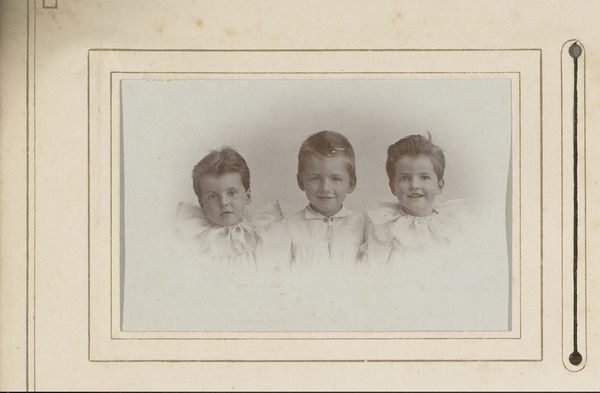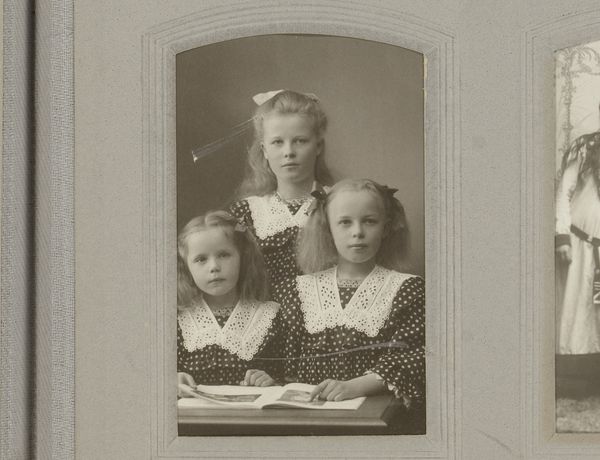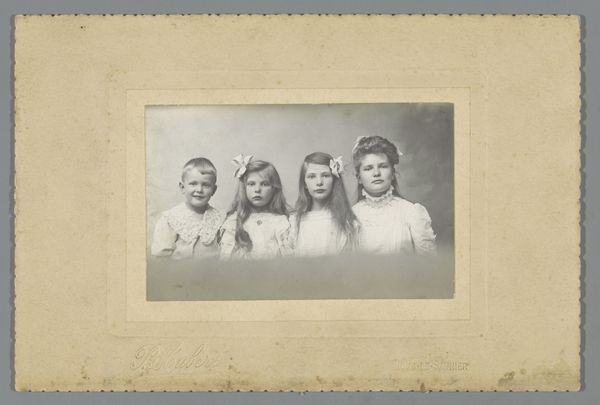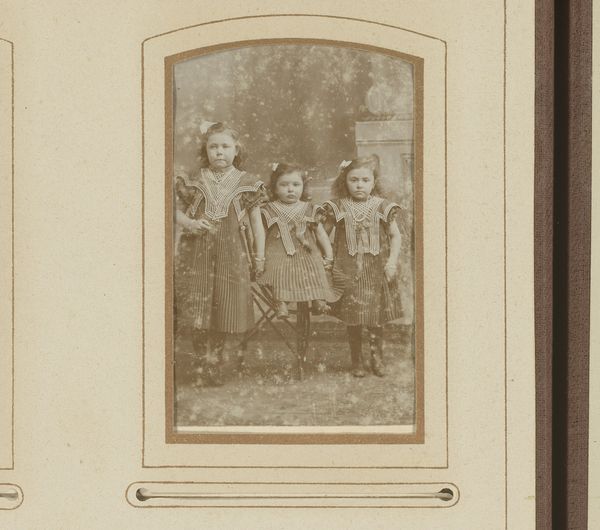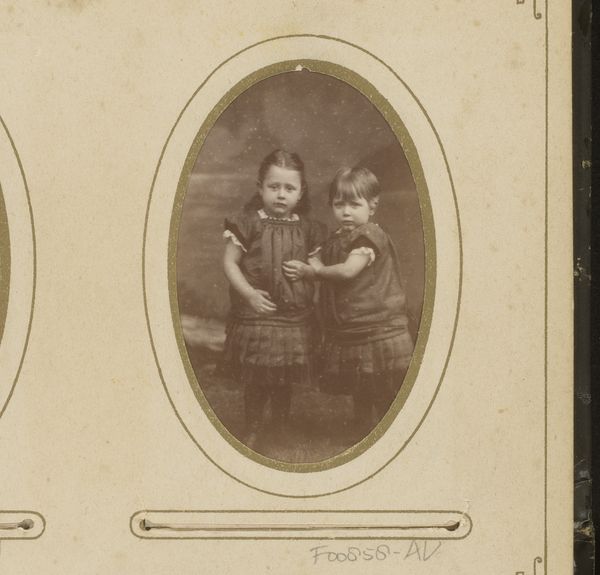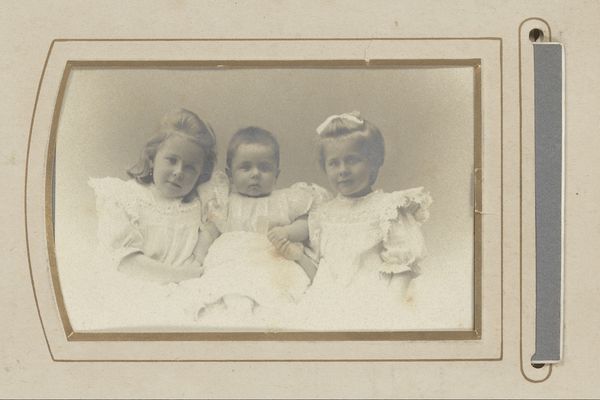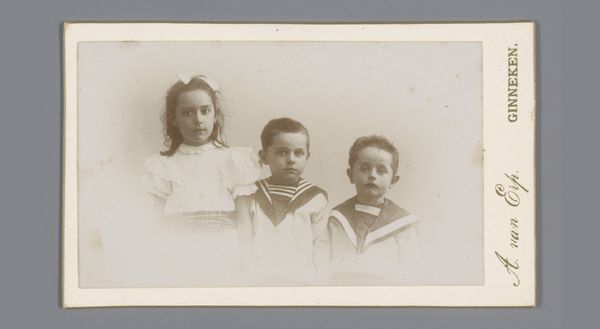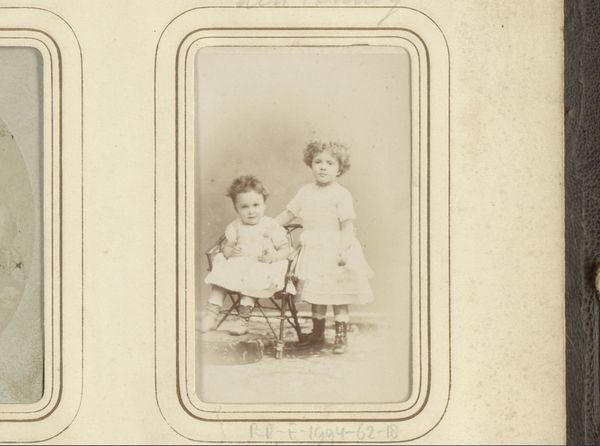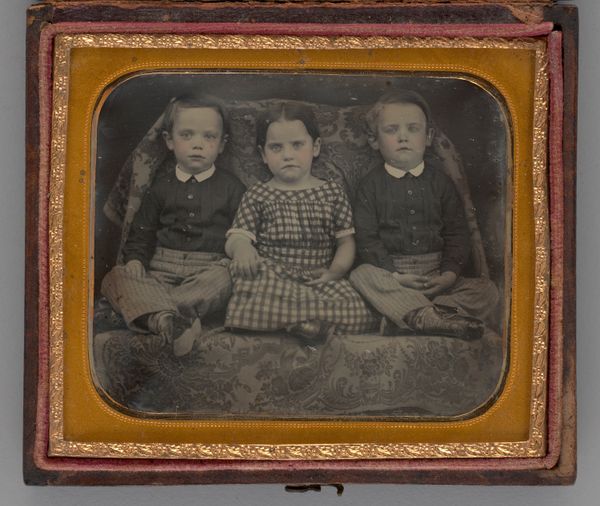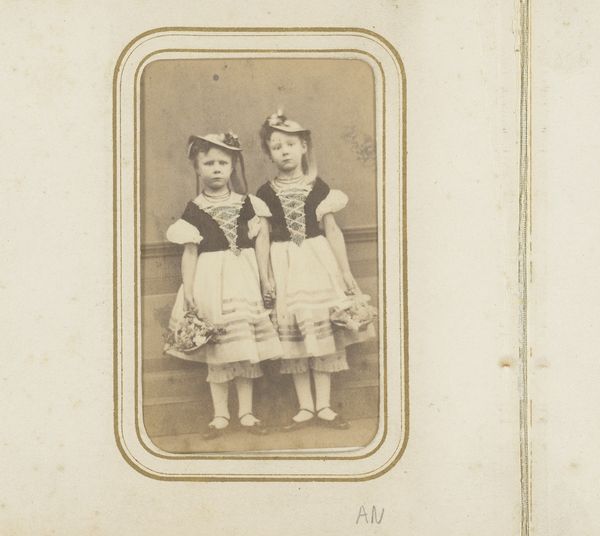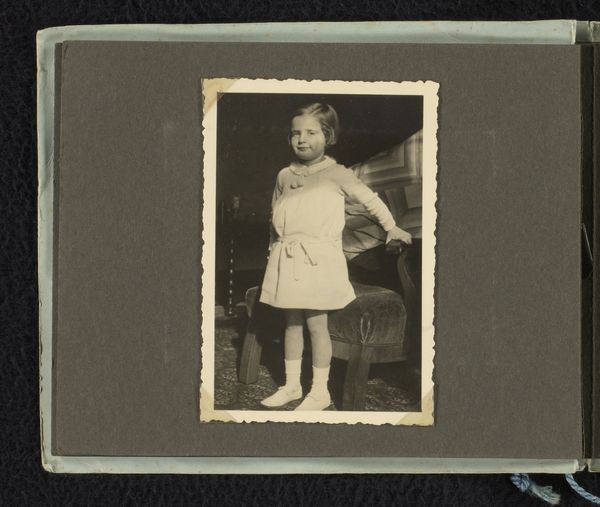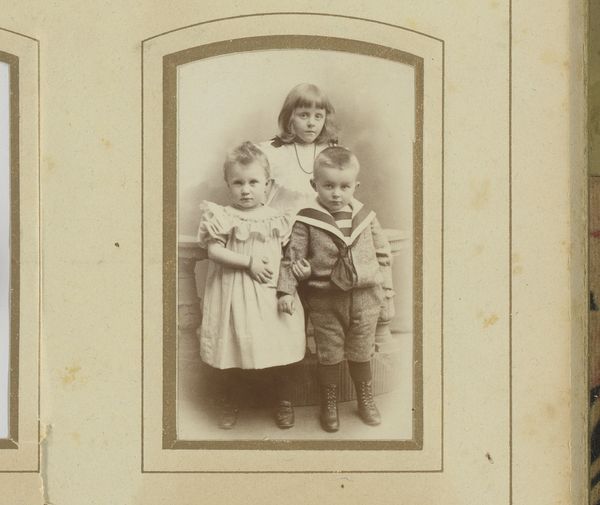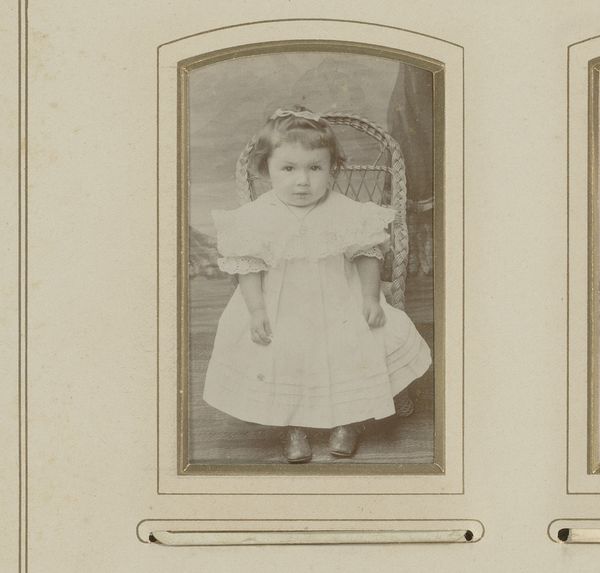
photography
#
portrait
#
pictorialism
#
photography
#
historical photography
#
genre-painting
Dimensions: height 85 mm, width 51 mm
Copyright: Rijks Museum: Open Domain
Editor: Here we have "Groepsportret van drie meisjes met identieke jurken en strikken," which translates to "Group Portrait of Three Girls with Identical Dresses and Ribbons." The photo was taken sometime between 1890 and 1930. I’m struck by the girls' somber expressions; they seem almost posed like dolls. How do you interpret this work? Curator: I see this portrait as a potent commentary on the societal expectations placed upon young women during that era. The identical dresses and ribbons symbolize conformity, stripping away individual identity. This speaks volumes about the limited roles and freedoms afforded to women, their identities often molded by societal expectations rather than personal desires. What do you think about the composition itself? Editor: The girls are arranged almost like a pyramid, with one girl slightly behind and between the other two. It gives the image a sense of stability but also perhaps hierarchy. Curator: Exactly! Consider the power dynamics at play. Are they simply posing, or are they being presented? Early photography was expensive, and portraits like these were statements of social status. Their carefully constructed image reflects not only wealth but also adherence to ideals of femininity, whiteness and childhood innocence. I'm wondering, what do these identical attributes and staging conceal? Editor: I suppose it hides anything unique or potentially rebellious. There's a pressure to perform a specific kind of girlhood. Curator: Precisely! The photograph thus becomes a tool of social control. Thinking about how representation functions, would you say the photograph reflects how things are, or how they *should* be, ideally? Editor: It seems more like an ideal, a constructed image rather than a candid glimpse. Seeing it through that lens, it’s not just a portrait; it's a statement about the roles girls were expected to play. I will look at these portraits very differently from now on! Curator: Agreed! And remembering these complexities allows us to critique the underlying systems of power that shaped even seemingly innocent images like this one.
Comments
No comments
Be the first to comment and join the conversation on the ultimate creative platform.
